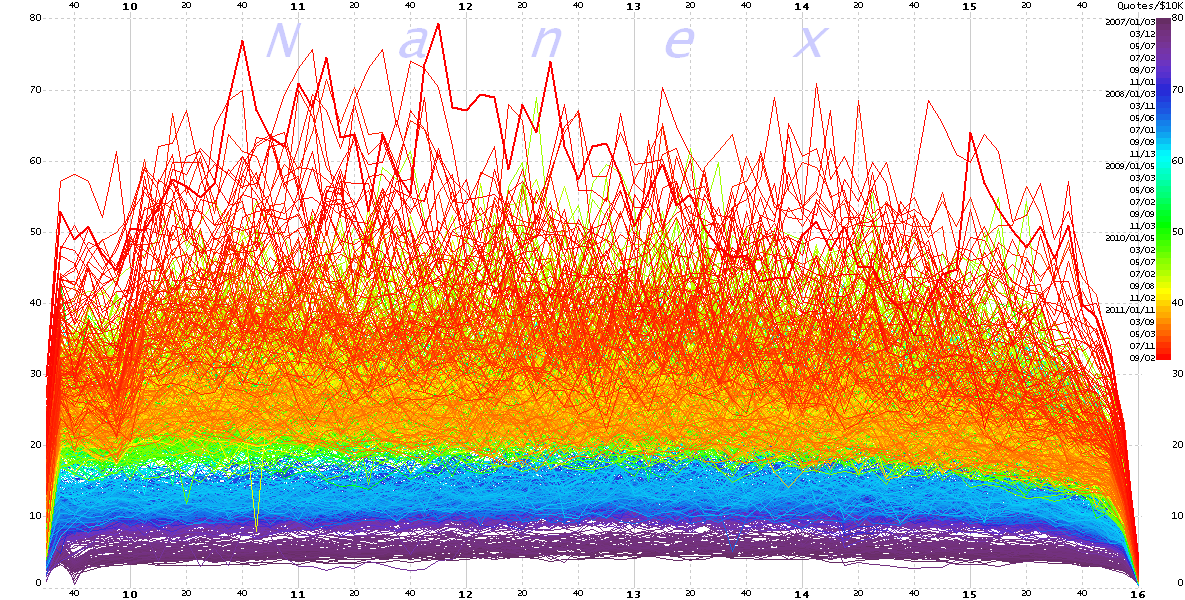The chart below shows how many quotes it takes to get $10,000 worth of stock traded
in the U.S. for any point in time during the trading day over the last 4 years. Higher
numbers indicate a less efficient market: it takes more information to transact the
same dollar volume of trading. Quote traffic, like spam, is virtually free for the
sender, but not free to the recipient. The cost of storing, transmitting and analyzing
data increases at a higher rate than its rate of growth: that is, a doubling of data
will cost significantly more than twice as much.
This explosion of quote traffic relative to its economic value is accelerating. Data
for September 13, 2011 is the thicker red line that snakes near the high. There is
simply no justification for the quote traffic that underlies this growth. Only the
computers generating this traffic benefit when they successfully trick other computers
or humans into revealing information, or executing trades. This is not progress. Progress
is almost always accompanied by an acceleration in efficiencies. This is completely
backwards.
And to anyone who might say: "To my knowledge there's been no proof shown that high-frequency
trading has been detrimental.", we'd like to submit this as exhibit A. We think that
a 10-fold increase in cost would be considered "detrimental" by most business people.

Nanex


